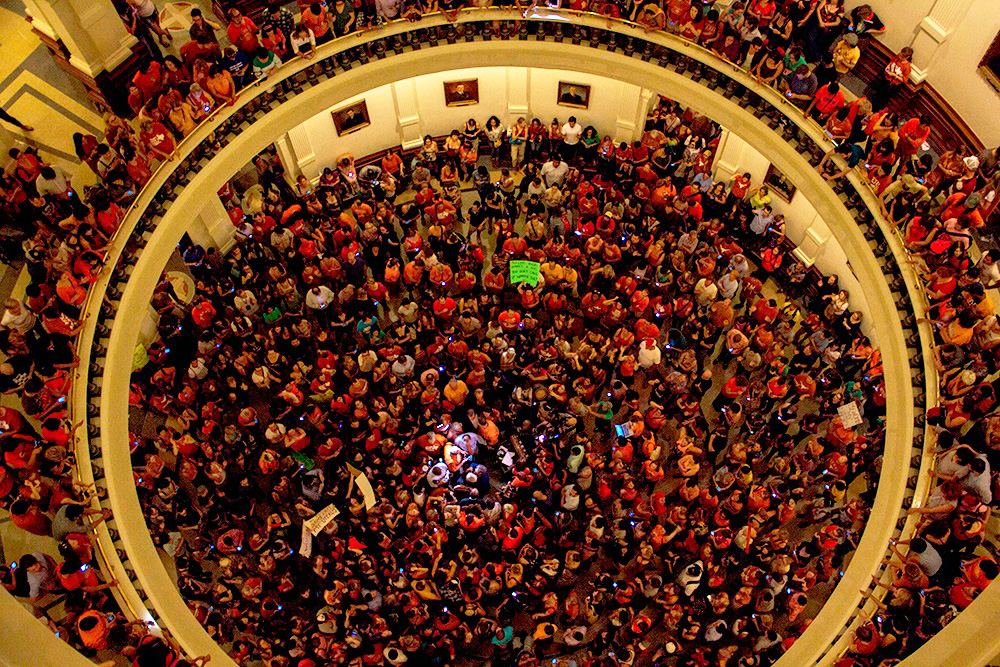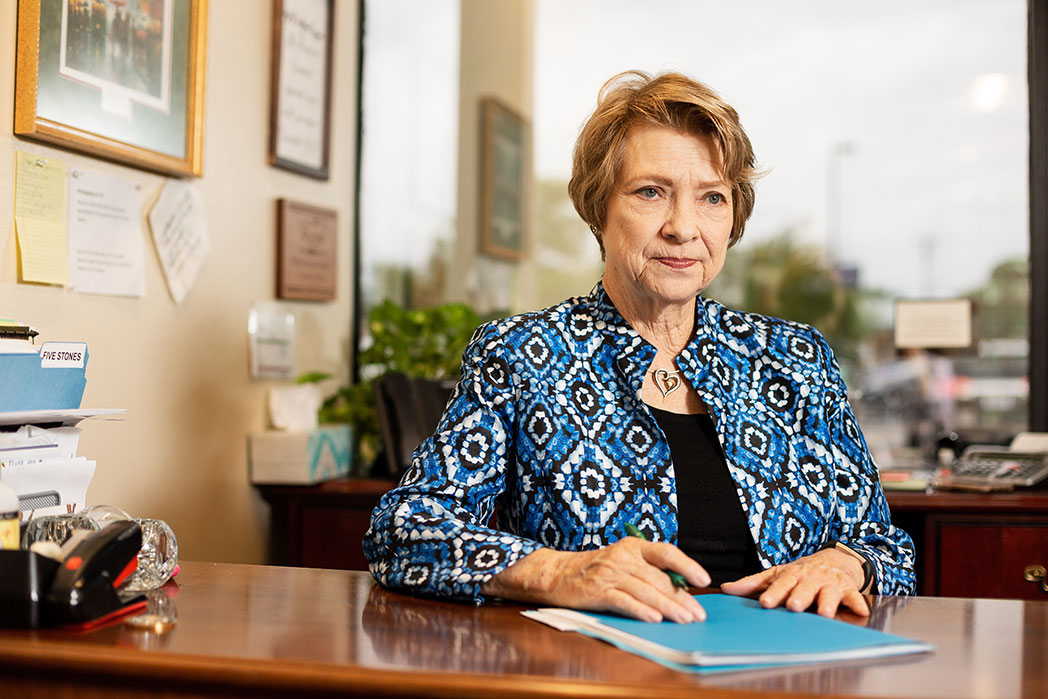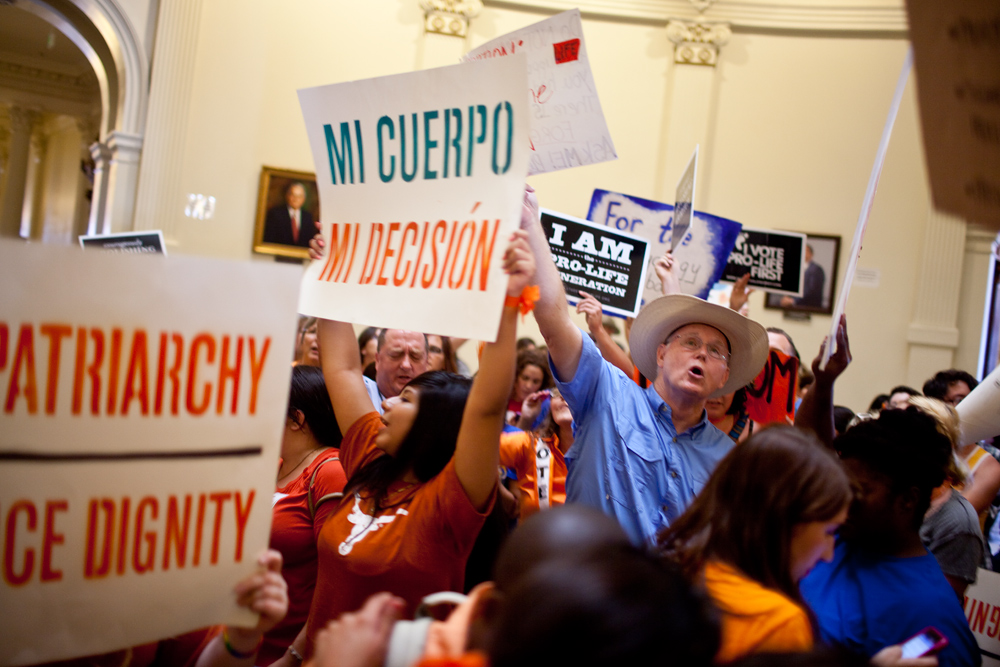
The People Behind the ‘Unruly Mob’
With tight co-ordination and even tighter messaging, an informal coalition inspires thousands to protest anti-abortion bill
Above: The Capitol rotunda on the night of Sen. Wendy Davis' filibuster.
After Democratic senators and an orange-clad crowd killed one of the harshest anti-abortion bills in the nation with a filibuster—by a state senator who went from obscurity to national celebrity—Lt. Gov. David Dewhurst walked to the press table in the Senate early Wednesday morning and blamed the death of the bill on an “unruly mob.”
But who was this wild throng that so peeved the Senate leader that he said it was their blaring rather than his bungling that had lost the day for the Republican majority? Folk from every party of Texas, it seems. And there was nothing unruly about how they got there.
That’s because the moment Gov. Rick Perry added anti-abortion bills to the first special session, reproductive-rights organizations and advocacy groups started unifying like they were community organizers on steroids. They formed a coalition comprising NARAL Pro-Choice Texas, Planned Parenthood, Jane’s Due Process, Faith Action for Women in Need, Whole Women’s Health, the Lilith Fund, as well as several others. The coalition explained the impact of the bills to their supporters, shared a campaign to alert their supporters, recruited influential people on social media to help spread their message, coordinated mobilization tactics, set up rideshares, got people motivated, and kept ramping up the zeal. They all agreed to wear orange.
It worked. Within two weeks momentum had built, from fewer than 30 bill opponents at the first public hearing, to more than 700 at the second, to 1,000 during the House floor debate. By last Tuesday, when Sen. Wendy Davis performed her famous filibuster, more than 2,000 bill opponents, dressed in orange and determined to show their political strength, crammed beneath the dome.
They came from all over Texas. In an informal survey, Lize Burr, president of Capital Area Democratic Women, found that bill opponents had traveled from as far as Denton, Grapevine, Mesquite, Houston, San Antonio, Dallas, Waco and Edinburg. Men, women, and children turned up, some for multiple days, with many engaging the legislative process for the first time.
Joan Grable, 64, had never been in the Senate gallery before. But she’d heard about the turnout for last Tuesday’s Senate debate from friends on Facebook. “I came today to help have a huge visual display for the world,” she said, noting that as a baby-boomer who remembered the time before abortion was legal. “On women’s issues, we’re going backwards.”
Contrary to what Dewhurst might have believed, though, the crowd was deliberately well behaved. The organizing coalition had worked hard to make it so. NARAL Pro-Choice Texas blasted social media messages throughout the day about the importance of obeying Senate decorum. One Facebook update, for example, read: “We NEED to be PRESENT and support Wendy Davis until the end, so NO clapping, loud talking, hissing, booing, cheering, jazz hands, NOTHING. They will throw us ALL out. Please think of the greater good if you’re tempted to act out. Take it outside. Take it into the auditorium. Until midnight today, this is not the time and place for chanting or outbursts.” A printed variation of the message circulated through the gallery. Brittany Yelverton, a community outreach specialist at Planned Parenthood of Greater Texas, circulated tirelessly through the gallery, reminding each flank of the ‘orange army’ about the importance of keeping calm.
The crowd wasn’t disruptive, but neither was it disengaged. Every time GOP senators got tricky with the Senate rulebook, tension ratcheted up, Twitter exploded, and bill opponents in the gallery and in the rotunda and in the basement of the Texas Capitol slid to the edge of their seats. It was surprisingly high drama. So when Senate Republicans tried to force a vote just minutes before a midnight deadline, the disciplined crowd—outraged by the GOP maneuvers—went wild. It became too loud to hear the senators. Dewhurst walked away from his mic, and Senate Bill 5 died on the floor.
Soon after, Dewhurst complained to reporters that “an unruly mob using Occupy Wall Street tactics” had derailed the legislation. Later, he also criticized Senate Democrats for having incited the last-minute hullabaloo. But he wasn’t done spreading blame. On Friday, he claimed that the media on the Senate floor had helped spur the crowd. Dewhurst’s spokesman later retracted that claim. Whomever Dewhurst ultimately blames, though, it’s clear that he’s frustrated with the orange army.
That’s not surprising. And it’s not going to stop. The moment Gov. Perry called a second special session, the organizing coalition got to work again. The rally at the Texas Capitol scheduled for Monday, when the second special session will begin, has more than 6,300 signed up. Prominent figures like Sen. Davis, Cecile Richards, president of the Planned Parenthood Federation, and Ilyse Hogue, president of NARAL Pro-Choice America, will address the crowd. Natalie Maines of Dixie Chicks fame, plans to perform.
But maintaining discipline and staying on message when so many citizens are impassioned is like trying to stand still in a hurricane. Other protest groups are forming against the bill—one, for example, has more than 7,000 people signed up—and marshaling the orange army may become more spread out. Heather Busby, executive director of NARAL Pro-Choice Texas and a central figure in the informal coalition, said that a diversity of actions were welcome but she worried that too much uncoordinated action could backfire. “People are fired up, but we could be looking at quite a few weeks. I don’t want people to get burned out,” she said.
Indeed, though many advocates believe that there’s a grim inevitability to the passage of the anti-abortion bill, they’re staying focused on next year’s elections. Wendy Davis’ Senate re-election campaign is already brimming with cash, and over the next few weeks, voting registrars will be mingling with the orange crowds. The question will be how long can abortion-rights advocates maintain this level of organization and energy, and can they have an impact on next year’s elections. That effort begins this week.


